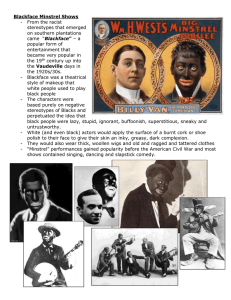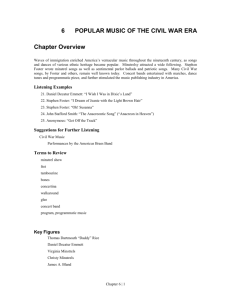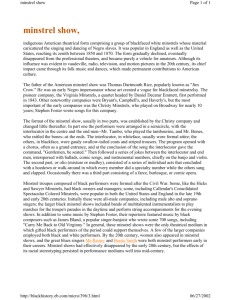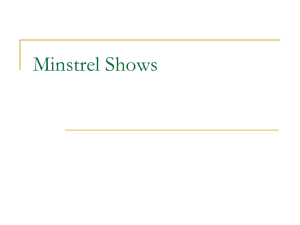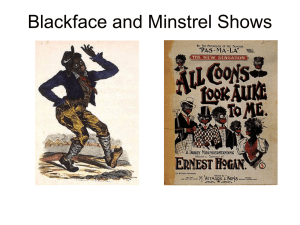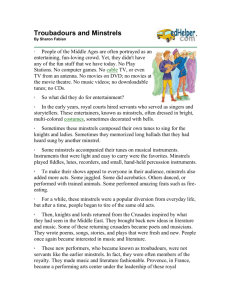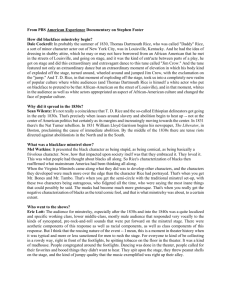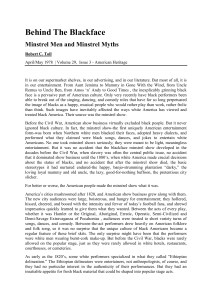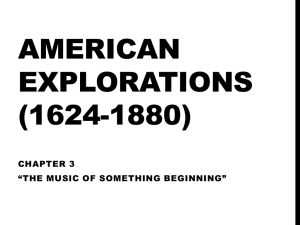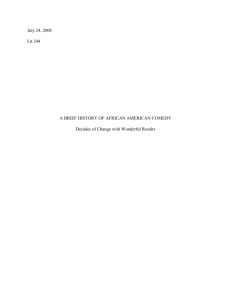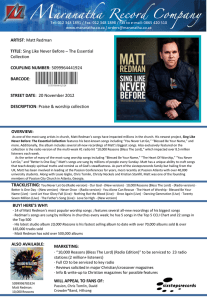Minstrel Shows
advertisement
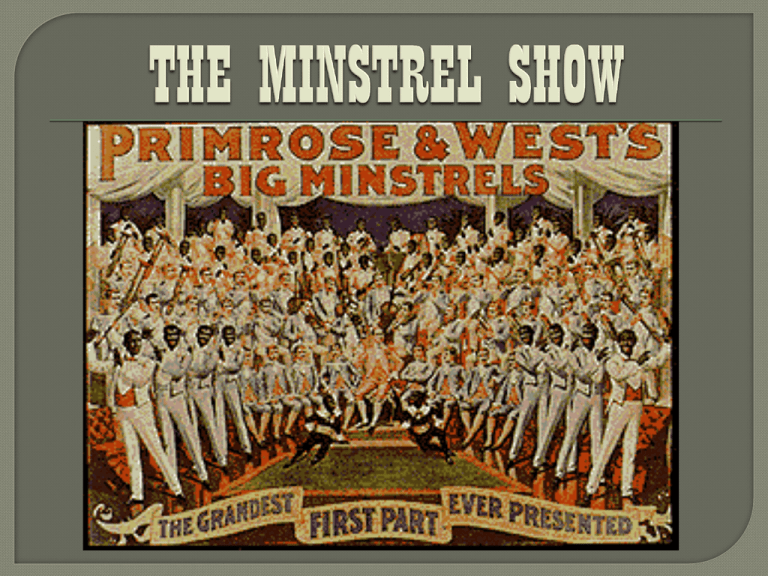
an original American theatrical form popular from the early 19th to the early 20th century peak popularity between 1850 and 1870 featured “comic” enactment of racial stereotypes first performed by white men in blackface caricaturing the singing and dancing of slaves troupes composed of black performers formed after the Civil War this was the only theatrical medium in which gifted black performers of the period could support themselves a few larger companies had black and white performers by the 20th century women performers were also employed Considered the father of blackface performance An early African American impersonator • The earliest blackface performers were known as “Ethiopian delineators” Performed short specialty numbers, not full-length evenings His stage persona was popularly known as “Jim Crow,” the name of the song and dance he made famous in 1832 The Tyrol is a region of the eastern Alps including parts of western Austria, southern Germany, and northeastern Italy. Sparked by a wildly successful tour by a group called the Tyrolese Minstrels in 1839, a craze for Alpine music seized America. Dozens of German, Swiss, and Austrian singing groups crisscrossed the country during the 1840s. Dressed in native garb, these groups entertained audiences with a combination of singing, yodeling, and “Alpine harmony.” In the early 1840s, a group called the Tyrolese Minstrel Family toured the United States with a program of traditional European folk songs. Dan Emmett, an Ethiopian Delineator, and three friends decided to stage a blackface spoof of The Tyrolese Minstrel Family concerts, calling themselves Dan Emmett's Virginia Minstrels, in order to capitalize on the familiar and popular title. Their blackface revue premiered at New York's Bowery Amphitheatre in February 1843. Formed The Virginia Minstrels • A blackface quartet (therefore, the 1st blackface group) • First performed in 1843…and disbanded within a year • First to offer a full evening’s entertainment of blackface • The Minstrelsy genre acquired its name from them • Credited with writing/introducing “Blue Tail Fly,” aka, “Jimmy Crack Corn” Later performed with Bryant’s Minstrels (1858 – 1866) • Introduced the song “Dixie” (1859) • Authorship credited to Emmett (though disputed) Also known as Christy’s Minstrels Most important of the early minstrel companies Played on Broadway for nearly 10 years Established the format all other minstrel shows would adopt Stephen Foster wrote many of their songs Part One Performers were arranged in a semicircle The interlocutor sat center in whiteface usually wearing formal attire The “end men” in blackface wore gaudy swallow-tailed coats and striped trousers • Mr. Tambo played the tambourine • Mr. Bones rattled the bones (clappers originally made from bones) The program opened with a chorus, often as a grand entrance, and at the conclusion of the song the interlocutor gave the command, “Gentlemen, be seated.” A series of jokes ensued between the interlocutor and end men, interspersed with ballads, comic songs, and instrumental numbers, mainly played on banjo and violin (a kind of variety show) Part Two, or the olio (mixture or medley) Consisted of a series of individual acts Concluded with a hoedown or walk-around in which every member did a specialty number or bit while the others sang and clapped. Part Three was a farce, burlesque, or comic opera. Musical influences: • • • • popular, sentimental songs sung by his sisters black church services he attended with the family’s servant popular minstrel show songs songs sung by black laborers at the warehouse where he worked for a time 1849 – commissioned to write songs for Christy’s Minstrels Famous songs: • • • • • • “Oh! Susannah” (1848) “Camptown Races” (1850) “Old Folks at Home” aka, “Swanee River” (1851) “My Old Kentucky Home” (1853) “Jeanie with the Light Brown Hair” (1854) “Beautiful Dreamer” (1864) Songs/Composers (already discussed) Dances • Cakewalk • Buck and Wing • Tap and Soft Shoe Performers • William Henry Lane, aka Master Juba • Ma Rainey • Bessie Smith
